Latino Immigrants Come to the US with Negative Stereotypes of Blacks
About a week ago
Reggie H. and another friend sent me a fascinating article from
Duke University's News and Communications online site, penned by
Kelly Gilmer and entitled "
Latino Immigrants Come to the US with Negative Stereotypes of Black Americas, New Study Shows." It details research by Duke political scientist
Paula D. McClain, in conjunction with a series of colleagues (
Niambi M. Carter, Victoria M. DeFrancesco Soto and
Monique L. Lyle of Duke;
Jeffrey D. Grynaviski of the University of Chicago;
Shayla C. Nunnally of the University of Connecticut;
Thomas J. Scotto of West Virginia University;
J. Alan Kendrick of St. Augustine's College; and
Gerald F. Lackey and
Kendra Davenport Cotton of the University of North Carolina at Chapel Hill), that examined racial attitudes among a small cohort of Latino immigrants--most of them Mexicans, Whites, and African Americans in
Durham, North Carolina. One of the main findings in the
study (now online), which was funded by the
Ford Foundation and will be published in August in the
Journal of Politics, was that rather than adopting negative racial attitudes about Blacks from White Southerners, the Latinos tended to arrive in the US with the stereotypes already, and to identify more with Whites than Blacks. In addition, living in neighborhoods with Blacks reinforced, rather than diminished the negative feelings and beliefs. Almost 60 percent of the Latinos studied believed that Blacks were not hardworking; about 56 percent felt that Blacks could not be trusted; and about 33% or a third felt that Blacks were not easy to get along with. Among the Whites in the study, the corresponding percentages were 9.3, 8.4, and 9.6. (Of course White Southerners have depended upon the hard, low-cost labor of Blacks, for much of the country's history.) The study also showed that Latinos with higher educations held
fewer such negative stereotypes.
Also interesting, but not surprising to me, was the finding that the White respondents identified more strongly with the Blacks than the Latinos, with only 22 percent saying they had the most in common with Latinos, whereas almost half (49.6) of the Black study participants did, with 45.5 saying they had the most in common with Whites. The findings "depressed" McClain and the other researchers, who noted the strong recent increase in Latino immigration to the South, where more than 50% of the US's Black population lives, and whose problematic racial history and climate have never been adequately addressed.
I had some immediate thoughts about the report, and here is an excerpt of my response to Reggie's initial email:
Very interesting, and sort of what I expected, particularly in terms of whites' and Blacks' views of the Latinos. I hope that McClain and her co-researchers expand their study to look at a diverse group of Latino immigrants, because right now, it appears to be based on a very small cohort of primarily Mexican immigrants (who admittedly constitute the majority of immigrants from Latin America, and who may also be the majority in the South and West), and therefore does not represent the broader spectrum of Latino immigrants nor the particular socially inflected perspectives of people from different countries, or even different areas within countries. What are the nuances, for example, between Latino immigrants from a country that has fewer people of African descent (Guatemala, Chile, Argentina) versus those from a country that has a large or preponderant such population (Dominican Republic, Venezuela, Colombia)? How have the internal national discourses on race inflected with various kinds of discourses and imagery from the United States the immigrants encounter before arriving here? Also, it would be interesting to connect this with information from the Census on self-identification in terms of race among Latinos. I rarely see it mentioned, but a large number of Latinos in 2000 identified as "white," certainly more than many people might imagine based on the media's constant rhetoric invoking "Hispanic" as a "racial" category, rather than a constructed ethnicity. How does a homegrown rhetoric of white supremacy and possibly an identification with "whites" elites in their home countries, along with a negative view of blacks and black Americans, result in self-identification as "white" when they come here if they're asked to racially self-identify? Even after asking these questions, however, it gibes with studies and anecdotal accounts I seem to recall. The anti-black and white supremacist rhetoric, even in countries like Mexico which do extol mestizaje and the nation's mixed roots, are very strong. It also jogs my memory about the Memin Pinguin scandal of last year, and the apparent lack of understanding about the racist iconography that those images represented.
To put these comments more felicitously, I hope that McClain and her colleagues continue and expand their research inquiry and study pool. I hope they'll closely at the nexus between the historically raced and racist hierarchies and ideologies in the immigrants' home countries and the raced and racist rhetoric and ideology coming from the US, though sorting these two strands out may be quite difficult. What are the mechanisms through which these racial constructions and racisms are produced in the immigrants' native countries? What structures and systems inculcate and reinforce them before they arrive? Numerous studies across a range of fields have explored the history of racism and racial constructions throughout Latin America; Rout's history of Blacks in "Spanish America" is one of the best overviews, but numerous others, looking at specific countries (Dominican Republic, Mexico, Cuba, etc.) and regions have described the development of racial hierarchies, racism, ethnocentrism, and related ideologies outside any US influence, which is also unsurprising given the historical development and preponderance of racist ideologies and rhetoric in the very European nations (Britain, France, Spain, the Netherlands, Portugal) that colonized the Americas. It is also important to consider the effects of immigrants returning from sojourns in the US, as well as more recent American and Black American popular culture's effects in the immigrants' countries of origins. For example, what effects have personal experiences with American forms of racialization had on immigrants from Puerto Rico, Dominican Republic, Colombia, Venezuela, and Panama who return to their native countries, and how do their beliefs and experiences effect the attitudes of their countrypeople who have not yet come to the US? How does the situation differ for the above five countries, whose populations largely consist of people of African ancestry, versus other countries, such as Mexico (which does have an identifiable Black population), Ecuador, Guatemala, El Salvador, Chile, or Argentina, with smaller populations of Afrodescendents?
I also decided to check the
2000 US Census, because I recalled from my readings of that ast report that there were some important findings on race and ethnicity. One that I think relates to this self-perception among the Latinos studied in McClain's research was that almost half (48%) of self-reported "Hispanics" listed their "race" as "white" only, while 42% listed "some other race." A very small number, less than 4 percent, listed either "black or African-American" or any of the other racial categories (Asian, Native American and Pacific Islander) alone. (From another report I read I recall that the majority of the "Black" Latino respondents were Puerto Rican, followed by Mexicans). It would be fascinating to learn which Latinos/Hispanics tended to identify as "White" alone versus who identified under some other category; as I've seen noted elsewhere, were the longstanding US notions of Whiteness applied, ironically many of the self-identified "white" Hispanics would not meet the criteria. Moreover, another irony of the findings is that right now in the US, the major animus
against Latino immigrants, and in particular against
undocumented Mexican immigrants, isn't coming from the very people these immigrants not only don't identify with, but find difficult to befriend or trust. For the most part it isn't Blacks (save
Vernon Robinson, Jesse Helms's protegé) uttering the extreme anti-immigrant rhetoric that has come out of the US Congress (cf.
Iowa GOP Rep. Steve King,
who compared undocumented immigrants to cattle), that's being bandied about in the media, and that underpins the racist elements among groups like the Minutemen. It wasn't Black US House members who pushed the harshest anti-immigration legislation in the last 75 years, or who're behind anti-immigrant measures in Georgia and other states...
GOP Outreach to Blacks Faltering
On Steve Gilliard's blog, I came across his writeup of Adam Nagourney's New York Times article yesterday, "
G.O.P.'s Bid for Blacks Falters." He says, "Until they get serious about opportunity, like changing some of the drug laws and felons getting the franchise back, people aren't going to take it seriously. And they aren't going to do that." I would add that despite the few high profile candidates the GOP has fielded for Congressional and state house races (Steele in Maryland; Swann in Pennsylvania; Blackwell in Ohio, etc.), there's little sign that the party is serious about finding African-American candidates who connect with African-Americans as well as non-Blacks. Steele has repeatedly hankyheaded for the actions of the Maryland GOP and his patron, Maryland Republican Governor Robert Ehrlich, while Blackwell's efforts to disenfranchise Black voters in the 2004 election would make any real Black support for him a miracle. Swann, as far as I can tell, is running on his celebrity as a former Pittsburgh Steeler. The New York GOP refused to back a Black candidate to replace George Pataki, going so far as to initially fall behind a candidate who'd been governor in another state, and few other state GOPs have found credible Black candidates. In general, the Republican Party continues to push policies that would do not benefit the majority of African Americans. Endless war, a burgeoning deficit and trade imbalance, failure to craft a reasonable immigration policy, a degraded environment, neglect of public education, hostility to affirmative action, misogynistic policies involving women's rights and reproductive rights, indifference over the health care crisis, the Medicare prescription drug boondoggle, privatization of social security benefits, and so on, are policies that are going to disparately harm African Americans. The GOP may or may not realize this, but the people they claim to be courting do. Well, most of us. Then there are the folks like my cousin who repeat the Republican nostrums ad infinitum, whether they match reality--his or anyone else's--or not.
BTW, tomorrow, W will be speaking at the NAACP's annual conference, his first such appearance in five years. What version of the half-baked crap that he regularly serves up will those present be expected to sit through?
Report Issued on Chicago Police Torture
I recall that before I left Chicago back in late March, I heard a short radio report about the ongoing investigation of police torture of criminal suspects back in the 1970s and 1980s. But I'd forgotten about it completely until I came across
Jodi Rudoren's
article in today's New York Times. Rudoren writes that based on a wealth of evidence, special prosecutors believe that "scores" of suspects were tortured, but also believed that the statute of limitations have run out, preventing them from indicting any of the people involved. While about half of the 148 other cases also showed credible evidence, three cases in particular struck the special prosecutors as very strong. So strong, in fact, that
Robert D. Boyle, the chief deputy special state’s attorney, stated "ruefully" that “we want to make it really clear, we only wish we could indict in these three cases.” The prosecutors' 292-page, which took 4 years to prepare, involved over 700 interviews, and cost $6 million, documents what has long been alleged and in some quarters dismissed: that Chicago police abused numerous Black suspects on the city's South Side for more than two decades. Those accused of presiding over this horrorshow include the former chief of police,
Richard Brzeczek, and a fired police commander,
Jon Burge. Also fingered, though gingerly, in the report is Chicago's
Dictator mayor,
Richard M. Daley, who was
Cook County's chief attorney when some of the most heinous allegations were made, and who, along with his deputy,
Richard A. Devine, delegated the inquiries, essentially quashing them. Brzeczek for his part is claiming that politics tainted the results of the investigation, and that Daley got off too lightly. It wouldn't be the first time. According to Rudoren's report, for the torture victims and their attorneys, this was one of the most disappointing aspects of the investigation and final report. I doubt it'll go anywhere, but it should dog Daley for as long as he clings to his office.
Nevertheless, one major effects of the report will be to provide even more material proof to critics' longstanding criticism of police brutality, especially against people of color and the poor. It will also buttress efforts to impose and maintain a death penalty moratorium, such as the one that Illinois' now-disgraced, Republican ex-governor
George Ryan signed into to law. Some of the tortured suspects confessed or provided evidence under duress against others in capital cases, meaning that innocent people may have been put on Death Row or even slain. What the report underlines above all, I think, is that community oversight over the police is absolutely necessary, and that people in government who have the power to act must do so positively and decisively when allegations of police brutality arise.
Also: today was
International Day of Protest against Homophobic Persecution in Iran. As
Direland announced yesterday, there were protests all across the world, from New York to against the rising tide of violence and murdered directed against LGBTs in Iran. But as with the protests that led to
LIFEbeat's cancelation of its benefit, the activism should be ongoing. Today, tomorrow, and when you can, please write to the
Persian Gay and Lesbian Organization (PGLO) to offer your support.
And speaking of the LIFEbeat debacle, social personality
Michael Musto manages to write about it
in his column in this week's
Village Voice without ever mentioning even one of the Black or Latino lesbian, gay and bi bloggers--or that there were Black and Latino lesbian, gay and bi bloggers--who confronted LIFEbeat. Ms. Musto Girl, you know that ain't right!









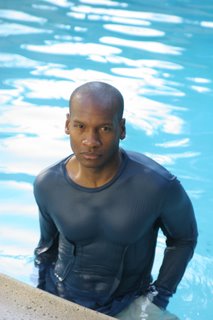 Speaking of femmy men and representation, I've noticed an interesting thing occurring on a show that I'd vowed weeks ago not to watch but have been following somewhat nevertheless: CBS's mind-shredding, mechanical, voyeuristic spectacle
Speaking of femmy men and representation, I've noticed an interesting thing occurring on a show that I'd vowed weeks ago not to watch but have been following somewhat nevertheless: CBS's mind-shredding, mechanical, voyeuristic spectacle  I said to C that I thought it was pretty interesting first to see an out, fem Black queer man not only extolling but expressing sexual desire
I said to C that I thought it was pretty interesting first to see an out, fem Black queer man not only extolling but expressing sexual desire 

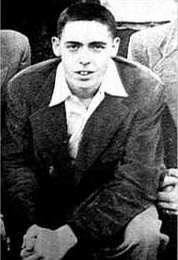







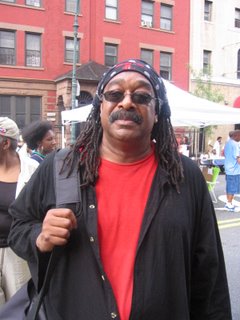










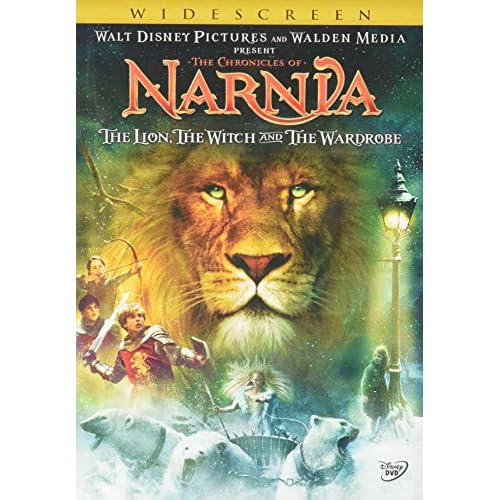 I've been watching far fewer movies of late than I tend to in Chicago, and the ones I've caught haven't made me want to see more. I finally saw
I've been watching far fewer movies of late than I tend to in Chicago, and the ones I've caught haven't made me want to see more. I finally saw  I also recently watched
I also recently watched  Cable broadcast, and I'd queued up
Cable broadcast, and I'd queued up 


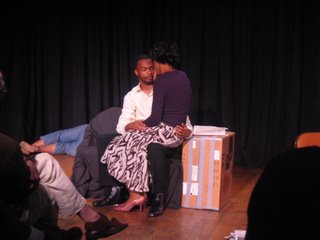






 Originally I was going to post about how a recent PEN anthology of contemporary French writing, introduced by France's current ambassador t the US no less, predictably failed to include the work of even one writer of color or out gay, lesbian or trans author, but I'll save that for tomorrow or Sunday. Instead, I'm posting a short entry on some of the things that have occurred since the French team's appearance and loss in this year's
Originally I was going to post about how a recent PEN anthology of contemporary French writing, introduced by France's current ambassador t the US no less, predictably failed to include the work of even one writer of color or out gay, lesbian or trans author, but I'll save that for tomorrow or Sunday. Instead, I'm posting a short entry on some of the things that have occurred since the French team's appearance and loss in this year's 
















